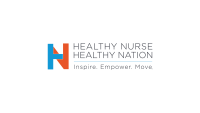The economy is bottoming out. Healthcare reimbursement is falling yet again—and a few hospitals are even laying off nurses. Many people are saying things are only going to get worse.
It started in the 1960s with Medicare and kept going. Now President Obama calls our healthcare system “stunningly expensive”—and it is! He intends to reform it. Great! So did Reagan and Clinton and Bush. And from where I stand, nurses have benefited each time. More money for more education for nurses. Expanded roles. Prescriptive privileges. Independent practice. Healthcare reform always seems to put nurses front and center in patient care.
Nurses can help Mr. Obama meet his goal of opening access to health care for the country’s 45 to 50 million uninsured. Creating more nurse-managed health centers (NMHCs) would help dramatically. The President wants to double the number of community health centers, which fits perfectly with nursing’s goal of a national network of 200 NMHCs, many of them associated with schools of nursing.
Moreover, growing numbers of nurse case managers follow chronic multimorbidity patients across settings, working in close collaboration with networks of other professionals. Nurse anesthetists are the sole anesthesia providers in more than two-thirds of all rural hospitals, according to the American Association of Nurse Anesthetists. Worldwide, they participate in 80% of anesthesia services and are the sole providers in 60% (www.anesthesia-nursing.com/wina.html). I believe they will soon provide 95% of anesthesia services and their role will expand to include the entire spectrum of peri-, intra-, and postoperative services for both inpatients and outpatients.
Clinical nurse specialists (CNSs) are creating amalgamated roles. Psychiatric CNSs will offer a fuller spectrum of services, providing physical as well as psychological services to clients. Gerontologic CNSs and nurse practitioners (NPs) will augment their roles with many of the customary duties of family physicians as they manage care of the elderly in various long-term arrangements.
In inpatient settings in nonteaching hospitals, the CNS and acute inpatient NP roles will be expanded to fill the house officer’s role. Nurse-midwives will become clinical specialists in women’s health, involved in preventing disease and promoting women’s overall health.
Staff nurses, whose contributions to patient safety have been demonstrated through two decades of research, will work in facilities and clinics under the direction of other nurses with graduate preparation in health services administration, but their clinical guidance will come from advanced practice nurses.
All nurses will be able to move upward educationally and outward organizationally. Online degrees backed up by hands-on competency tests will become the preferred way to climb an educational ladder. Nurse educators will provide care as they coach students at varying levels, and nurse researchers will track outcomes and quality. Nursing and medical schools will combine resources to treat local populations under capitated care contracts.
Learning will take place wherever the student happens to be. Quarterly journals will become the new textbooks. Readers will subscribe to and download them to Kindle™-like electronic devices—because knowledge is growing so rapidly that traditional books and journals become outdated faster than they can be revised and printed. Professional journals will be supplemented and interactive; conferences with authors, blogs with experts, and online communities will promote discussion worldwide. Palmheld computers already provide access to references, patient records, and treatment protocols anywhere—which is good, because nurses will be learning and practicing everywhere.
As you can plainly see, despite—or maybe even because of—the problems, there are signs of hope all around us!
Leah Curtin, RN, ScD(h), FAAN
Executive Editor, Professional Outreach
Dr. Leah Curtin, RN, ScD (h), FAAN, is executive editor, professional outreach of American Nurse Today. An internationally recognized nurse leader, ethicist, speaker, and consultant, she is a strong advocate for both the nursing profession and high-quality patient care. Currently she is clinical professor of nursing at the University of Cincinnati College of Nursing and Health. For over 20 years, she was the editor-in-chief of Nursing Management. In 2007, she was appointed to the Standards and Appeals Board of DNV Healthcare, a new Medicare accrediting authority. Dr. Curtin can be reached at LCurtin@healthcommedia.com.
Disclaimer: The views and opinions expressed in this article are those of the author and do not necessarily reflect the opinions or recommendations of the ANA or the staff or Editorial Advisory Board or American Nurse Today.

















